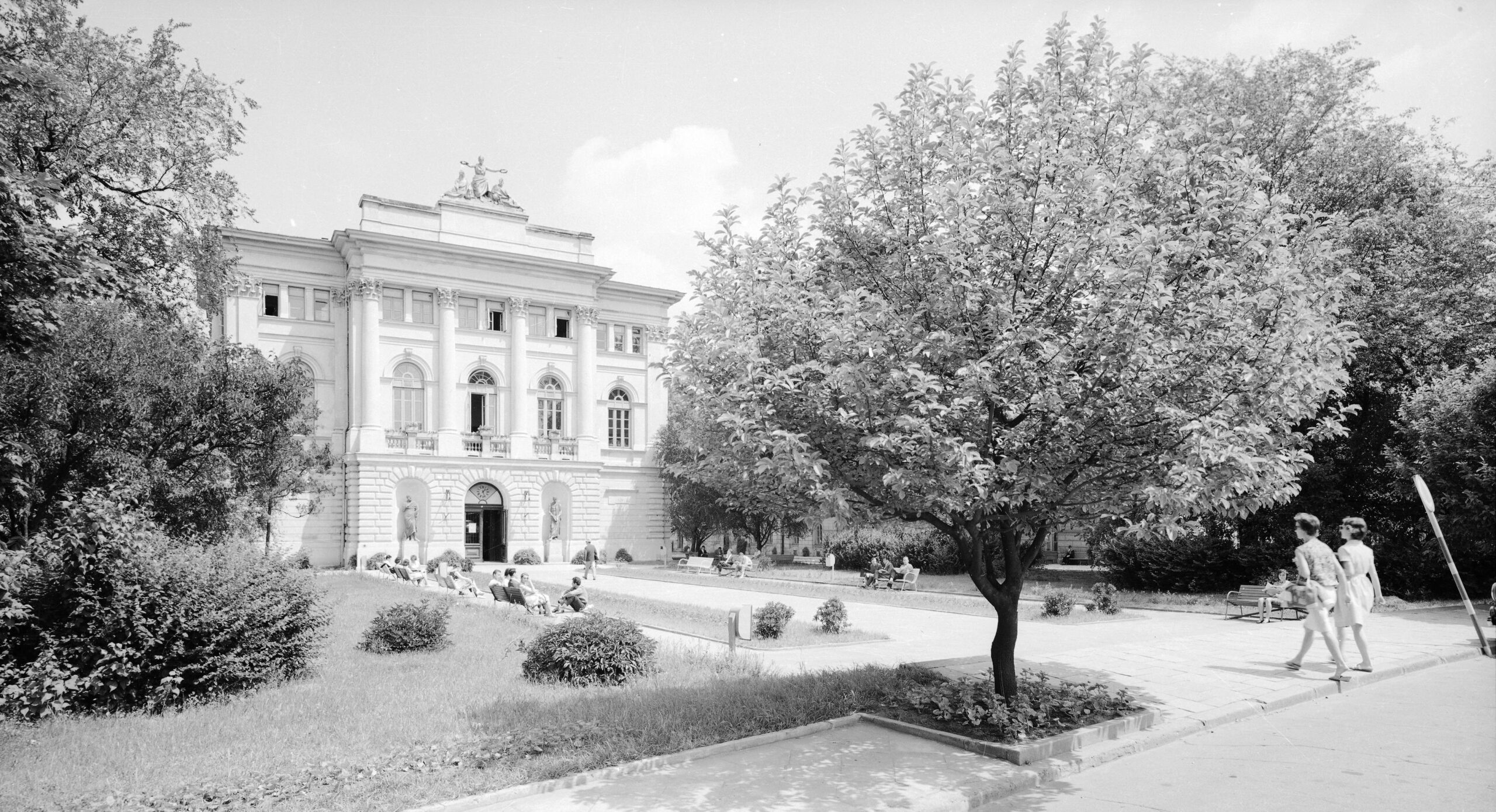Historians were highly interested in economic history in the mid-20th century. At that time, a number of fundamental studies were published, and discussions on economic matters were printed in the most prestigious historical periodicals. In fact, one historian of socio-economic history, Fernand Braudel, was nominated for the Nobel Prize in Economics. Two Polish academics, Marian Małowist and Witold Kula, played an important role in these processes. At that time, they gained international fame, and their works are in the canon of economic historiography to this day. They also left a large group of outstanding students who continued to build upon the achievements of their teachers.
by Tomasz Siewierski
Małowist and Kula: Parallel Lives
Although they were both concerned with economic history, they differed in most other aspects, and had little in common. The discrepancies between them concerned basic issues: methodology, the historical periods they studied, and the style of didactics.
This does not change their [positions as influentioal figures] representing the same generation and the same Warsaw milieu of historians. Marian Małowist was born in 1909 in Łódź. He graduated in history from the University of Warsaw, where he also defended his doctoral dissertation in 1934. Marceli Handelsman was the supervisor of his thesis. His other academic mentor was the sociologist Stefan Czarnowski. Witold Kula was born in 1916 in Warsaw. He also studied at the University of Warsaw, where, in 1939, he defended his doctorate under the supervision of Stanisław Arnold.
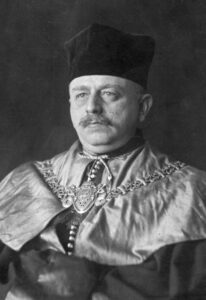
It is worth noting that in the interwar period there were two significant schools of socio-economic history in Poland: one in Lwów, under the patronage of Franciszek Bujak, and the other in Poznań, where Jan Rutkowski was the guiding influence. Neither Małowist nor Kula established closer contacts with these circles (although they especially appreciated Rutkowski’s works). Handelsman did not address economic matters at all, while Arnold in the second half of the 1930s was mainly absorbed in issues related to historical geography. Thus, Małowist and Kula developed their work away from the main currents of research at that time.
Both historians experienced the Second World War differently. During the German occupation, Małowist ended up in the Warsaw ghetto, from which he managed to escape. At this point, let us only add that Kula was one link in the chain of people who helped Małowist after he reached the “Aryan” side. In turn, Kula cooperated with the Information and Propaganda Office of the Home Army, and during the Warsaw Uprising for some time he worked in the radio station managed by Kazimierz Moczarski. After the uprising, he was taken prisoner by the Germans for several months.
The careers of both historians gained momentum right after the war. Małowist obtained his habilitation in 1946, and Kula the following year. Both – despite the fact that they never joined the communist party – joined the construction of the new system, as they hoped for a new and just social order. In 1946, Małowist became associated with the Institute of History of the University of Warsaw, and in 1953-1968 he was also an employee of the Institute of History of the Polish Academy of Sciences. Witold Kula’s academic path was slightly more diverse. The first years he worked at the University of Łódź, where in 1947 he obtained his habilitation. In 1950, he became associated with the University of Warsaw. Until 1955, he worked at the Historical Institute, then for the next two decades he was a professor at the Faculty of Political Economy. In 1953-1968, he worked at the Institute of History of the Polish Academy of Sciences, and for a short time he was also employed at the Central School of Planning and Statistics.
Despite the “Iron Curtain,” both Marian Małowist and Witold Kula tried to establish close relations with Western academia. For Kula, Paris was the most important destination in his academic travels. This was the result of close collaboration with the “prince of historians,” Fernand Braudel. These trips and relations with local historians are depicted in the book by Marcin Kula, Mimo wszystko bliżej Paryża niż Moskwy (Nevertheless, closer to Paris than to Moscow, 2010). Witold Kula disseminated Braudel’s work in Poland, initiating – together with Bronisław Geremek – the publication of a collection of his writings entitled History and Duration (1971). In 1963-1964, Kula gave lectures at the Annales Ècole Pratique des Hautes Ètudes in Paris. In 1965-1968, he became vice-president of the International Association of Economic History, and in 1968-1970, the president. Later, he would be appointed honorary president of this institution until the end of his life.
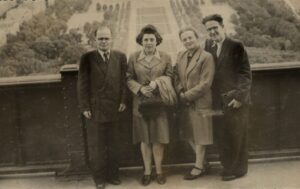
Like Kula, Marian Małowist also had a friendly relationship with Fernand Braudel. He also kept in touch with a number of historians from Braduel’s circle: Jacques LeGoff, Maurice Aymard and Michel Mollat. He was the first director of the Center d’Ètudes Polonaises at the Sorbonne (1958-1959), and regularly participated in conventions organized by the Prato Economic History Committee under the patronage of Braudel. He also lectured at the Ècole Pratique des Hautes Ètudes many times. France, however, was not the only destination for his academic expeditions. Contacts with historians from Sweden were very important. A separate matter was his relationship with British academia, especially with Michael Post, whom he knew from the pre-war period, and Erik Hobsbawm. These meetings resulted in numerous publications by Marian Małowist in the “Past and Present” and “Economic History Review”.
Witold Kula died on 12 February 1988 in Warsaw. Only six months later, on 30 August, Marian Małowist passed away as well.
Marian Małowist’s research: in search for the reasons of backwardness
Marian Małowist was a historian who dealt almost exclusively with economic history. Throughout his life, he dedicated himself to understanding reasons for differences in the pace of economic development of individual European regions. The starting point was the economic backwardness of Poland and Central and Eastern Europe. Therefore, he based his research method on comparative studies. He compared late-medieval and early-modern societies with great panache. [He also conducted] research on Baltic trade and Stockholm’s role in it at the doctorate stage, and on Kaffa and the Black Sea trade, which was related to his habilitation thesis.
After the war, he dealt with the history of craftsmanship in the feudal economy, which resulted in comparative research on the history of craftsmanship in Poland and Western Europe. The possibilities of comparative studies continued to take him much further afield. In the 1960s, Małowist focused on the colonial expansion by the Iberian countries and its role in overcoming the feudal crisis. The next step was entering the field of African history, which made him a pioneer in this field of Polish historiography. The last geographical area of Małowist’s research was research on the history of the Mongol Empire. One of his last books, Tamerlan i jego czasy (Tamerlan and his Times, 1985), brought him popularity among a wider circle of readers. However, to each of the above-mentioned research areas he dedicated a separate book, as well as a number of smaller studies, often published in foreign academic journals: French, Italian, German, and English.
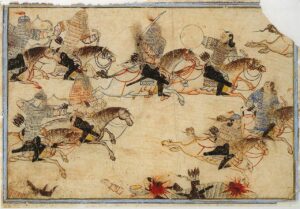
Still, there are far too few translations of his works. His theses are still present in world historiography, but they function indirectly, introduced by e.g. Immanuel Wallerstein. His most important studies were translated into English and published thanks to the efforts of Henryk Szlajfer and Jean Batou in 2010 by the Brill publishing house. On the other hand, a notable attempt to summarize Małowist’s academic writing is the work Wschód a Zachód Europy w XIII-XVI wieku (East and West of Europe in the 13th-16th centuries) published in 1973. Undoubtedly, it is one of the classic books of Polish economic historiography.
Witold Kula’s research: towards a model approach
Witold Kula was set to study economic history already in high school. While Marian Małowist was focused on the history of the late Middle Ages and early modern times, Witold Kula focused on the 18th and 19th centuries – his doctoral dissertation concerned the demography of the Kingdom of Poland. He had the ability to take a synthetic approach. Already in 1947, he had published Historia gospodarcza Polski w dobie popowstaniowej 1864-1918 (The Economic History of Poland in the Post-Uprising Era 1864-1918). This did not rule out detailed research, which was proved in the two-volume Szkice o manufakturze (Essays on Craftsmanship). Nevertheless, as one of his students Jacek Kochanowicz pointed out, “the monographic studies of [Kula] were subordinated to clearly formulated theoretical questions concerning both the very functioning of these manufacturers and their role in a broader economic context.”
Witold Kula actively participated in the preparation of the monumental synthesis, the famous History of Poland at the Institute of History of the Polish Academy of Sciences. At the beginning of the 1960s, Witold Kula published two of his three most important works. Problemy i metody historii gospodarczej (The Problems and Methods of Economic History, 1963) was by far the most extensive, in which he discussed, inter alia, issues related to statistical and demographic research in a historian’s workshop or issues of periodization of history. As a result, readers were given both a detailed textbook and an extremely interesting essay on economic history as a field of historiography.
The second of the aforementioned works, published in the same year, Teoria ekonomiczna ustroju feudalnego. Próba modelu (Economic Theory of the Feudal System. An Attempt At a Model) brought Kula international fame. Bronisław Geremek recalled the book as follows: “I consider Kula’s most important work to be a small book about the model of the feudal economy. First published in Polish, it faced harsh criticism from orthodox historians because it went beyond the traditional concept of Marxist historiography. Subsequently published in France on the initiative of Fernand Braudel, it did not attract much attention. […] Later it was published in Italy and gained great publicity – it can be said that the publication of Kula’s book coincided with a certain epistemological breakdown in Italian historiography. Soon after, many Italian studies inspired by the work of Kula appeared.” Kula’s third very important work is Miary i ludzie (Measures and People, 1970). It is not only a study of economic history, but also an important voice in the field of research on the history of ideas.
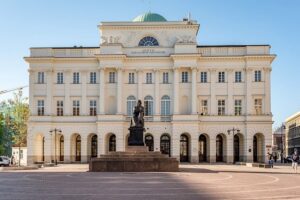
Marian Małowist’s Historical School
Marian Małowist wanted to gather around him young researchers who would be ready to deal with the issues he proposed, and thus he wanted to work with talented, ambitious people who were seriously thinking about an academic career.
The first generation of his students was a group that appeared at the University of Warsaw in 1947. They were: Antoni Mączak, Benedykt Zientara and Henryk Samsonowicz. Małowist enlisted them in his research project on economic interdependence in late-medieval Central and Eastern Europe. They dealt with the preparation of works on the history of craftsmanship in Poland, which they then contrasted with their own research on craftsmanship in Western European countries. The most outstanding names among the second generation of Małowist’s students are undoubtedly Bronisław Geremek and Andrzej Wyrobisz. Their works were also related to the history of crafts and trade.
Along with the change of the research area of Małowist, the profile of his lectures changed and he began a seminar on African studies. The group of adepts included later famous researchers of the history of Africa: Barbara Stępniewska, Andrzej Dziubiński, Rafał Karpiński, Bronisław Nowak and Michał Tymowski. Jan Kieniewicz, who was then involved in the expansion of Portugal in the Indian Ocean, was also in this circle.
It is worth noting that virtually each of the above-mentioned students of Małowist went through an extremely diverse research path, but it was always crowned with academic success. Let us mention two examples: Antoni Mączak wrote several books on the history of travel, which have been translated into several languages and are still popular today. Bronisław Geremek’s works on the history of ideas devoted to the lowest social strata enjoy greater recognition abroad than in Poland.

Witold Kula’s individuality seminar
Witold Kula, it seems, had no intention of creating a history school. In his career, however, he promoted twenty doctors, a large group of whom were future historians who took up pioneering topics, the great individualists of Polish historiography.
Tadeusz Łepkowski was the first student of Kula. He defended his doctorate on the beginnings of the working class in Warsaw in 1955 at the Faculty of Historical Sciences of the University of Warsaw. Ten years later, Łepkowski began extensive research into the history of South and Central America. He published, inter alia, History of Mexico, but was also the editor of the three-volume History of Latin America.
At the Central School of Planning and Statistics, Kula promoted one doctor. It was Jerzy Tomaszewski, who in 1960 defended his thesis on the stabilization policy of Władysław Grabski. Tomaszewski’s works (often written together with Zbigniew Landau) on the economic history of the Second Polish Republic are still the basic point of reference when it comes to this subject. However, it is worth remembering that in the 1980s, Tomaszewski began pioneering research on the history of Polish Jews, and was also the initiator of the establishment of the Mordechaj Anielewicz Center at the University of Warsaw.
In 1961, Jerzy Jedlicki, one of the most original historians in post-war Poland, defended his doctorate. At the Kula seminar, he undertook research on industrial statism in the Kingdom of Poland, and in the following decades he dealt with the history of mentality and, above all, the history of ideas. This led to the publication in 2008 of Dzieje inteligencji polskiej do 1918 roku (The History of the Polish Intelligentsia till 1918), of which he was a co-author.
In the same year, Kula promoted another doctor – Andrzej Brożek, the creator of pioneering research on the history of migration.
Kula’s students also included Elżbieta Kaczyńska, who until the 1970s conducted research on the economic history of the 19th century, focusing e.g. on the issue of labor. In the 1980s, she began to publish original and extremely valuable works on lawsuits and prisons. These are works combining the issues of social history, law and mentality.
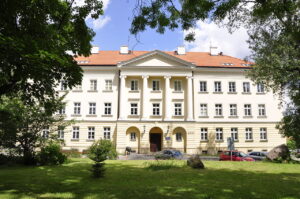
One of the youngest students of Witold Kula was Jacek Kochanowicz. In 1976, he defended his thesis The Functioning of the Serfdom Farm in the Kingdom of Poland in the First Half of the 19th Century. Economic history remained the main area of his research. It is worth emphasizing the significant activity of Kochanowicz in the international academic community. For over twenty years he cooperated with the Central European University in Budapest, and lectured, among other places, at the University of Chicago and the University of Washington in Seattle.
Active classics
The greatness of academics is mainly determined by their works, and despite the passage of time the works these two historians left behind still find readers among the next generations of researchers. On the threshold of the third decade of the 21st century, books by Małowist and Kula are fixtures in academic circles, both as classical works as well as rediscovered, read in isolation from the contemporary historiographic tradition. But in the humanist milieu, perhaps as much as the oeuvre itself, students inspired by their master are important. They follow the direction indicated by him, sooner or later finding their own path, sometimes close, sometimes very far from the track drawn at the seminar. Generations of historians who kept pace with the masters emerged from the seminars of both of these scholars.
Author: Tomasz Siewierski
Translation: Alicja Rose & Jessica Sirotin

